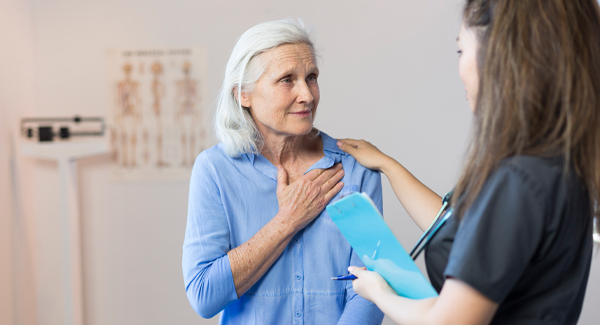Treatments for Rheumatoid Arthritis
Learn what medical treatments are available for RA and what you can do to manage your disease.
By Mary Anne Dunkin | June 12, 2022
Getting control of rheumatoid arthritis (RA) and the inflammation that fuels it involves medication, physical activity and living a healthy lifestyle. You should work closely with your doctor and other health care professionals to create a treatment plan that works well for you.
The goal of treatment for rheumatoid arthritis is to
- Reduce pain and stiffness
- Slow or stop the progression of the disease
- Prevent joint damage
- Improve physical function so you can perform normal daily activities
- Relieve fatigue and weakness
Medications
Medications are an essential part of treatment for most people with RA. Your treatment plan will likely include some of the following:
- NSAIDs. In low doses, nonsteroidal anti-inflammatory drugs (NSAIDs) can be effective at relieving pain. At higher, prescription doses they can also help control inflammation.
- DMARDs. Conventional synthetic disease-modifying antirheumatic drugs (DMARDs), primarily methotrexate, may be the first medication you are prescribed to slow disease activity in RA. Other DMARDs used in RA treatment include leflunomide, hydroxychloroquine and sulfasalazine. Sometimes two or more DMARDs are used together.
- Biologics. Biologics are genetically engineered proteins that target specific parts of the immune system that fuel inflammation. They are typically used if your disease doesn’t respond to conventional DMARDs. Different biologics work in different ways in the body, so if one doesn’t work, another one might. All are given by injection or infusion.
- Janus kinase (JAK) inhibitors. The newest class of drugs for RA, JAK inhibitors work by blocking the enzymes Janus kinase 1 (JAK1), JAK2, JAK3, and tyrosine kinase 2, which play a role in cell signaling that leads to the inflammatory and immune responses seen in RA and other conditions. There are currently three JAK inhibitors used to treat RA: tofacitinib (Xeljanz), baracitinib (Olumiant) and upadacitinib (Rinvoq). They are taken orally.
- Analgesics. The pain reliever acetaminophen can ease pain if you aren’t able to take NSAIDs. It won’t reduce inflammation.
- Corticosteroids. Similar to the cortisone your body makes naturally, corticosteroid medications are potent anti-inflammatories. Your doctor may prescribe oral corticosteroids to reduce inflammation that can damage joints and organs, usually while you are waiting for slower-acting, disease-modifying drugs to take effect.
Every medication comes with risks and possible side effects. It is important to ask your doctor about your medication risks and what to do if you experience side effects.
Rheumatoid arthritis can feel unpredictable, but this article helps people understand what treatment involves and when to adjust it. Your support ensures they never face that alone. You can help someone feel more empowered. Please make a gift today.
Physical Therapy and Exercise
Regular physical activity is an important piece of your overall treatment plan. It can help preserve range of motion in your joints and strengthen the muscles that support them.
Many people with RA benefit from working with an experienced physical therapist (PT). A PT can create a strength and mobility program for you and show you how to move in ways that will help and won't cause further damage. A physical therapist can also teach you pain relief techniques and prescribe splints and braces to support damaged joints.
In addition to exercises prescribed by a physical therapist, there are many activities you can do on your own to maintain or improve joint mobility, build muscles, strengthen your cardiovascular system and promote general health and well-being. The right form of activity for you depends not only on which joints are affected and the severity of your disease, but also on your interests. The best exercises are those you enjoy enough to do regularly. Popular and safe options for people with RA include walking, swimming, water exercise, low-impact aerobics and stationary cycling.
You should speak with your doctor before beginning any new exercise plan.
Living With RA
Along with physical therapy and medications, you can do many things on your own to take charge of your health and feel better overall.
Be Proactive
- Be an active participant in your treatment decisions and become a good self-manager.
- Assemble a health care team you trust.
- Keep track of symptoms, medications, side effects and pain levels.
- Get regular check-ups and keep up with your immunizations.
- Ask questions and share concerns with your health care team.
Stop Smoking
If you smoke, stop. Smoking increases inflammation and may lead to more severe RA. Research shows it may also affect your response to treatment, making RA difficult to control. Plus, it can increase your risk of other health problems associated with arthritis.
Use Self-Help Devices
If you have limited mobility, self-help devices can make your daily tasks easier. An occupational therapist can advise you about aids and assistive devices.
Seek Emotional Wellness
Feeling sad, worried or anxious are all common reactions to having a chronic disease. The inflammation at the root of RA may also contribute to depression, which has higher rates among RA patients than in the general population. But you can learn to cope with arthritis, improve your mood and ease worries.
Communicate with Your Partner
Limited movement — especially of the hip joint — may get in the way of sexual activity. Some extra planning and communication can help. Discussing your needs with your partner will help you overcome almost any difficulty.
Make Workplace Accommodations
The majority of people with RA can continue a productive, active work schedule. Whether you work inside or outside the home, the following suggestions may help.
- Avoid lifting, stooping and remaining in cramped or bent positions.
- Raise your computer monitor to eye level so your posture is good.
- Change positions often and move around at least every hour.
- Use a cushion when sitting to help support your back.
- Pace yourself and take short breaks throughout the day.
If job and household tasks are difficult or cause pain, work with an occupational therapist who can provide individualized advice and assistive devices.
Eat Well
Diet can’t cure RA and there is no specific diet to improve symptoms. However, a food plan rich in vegetables, fruit, fish and healthy fats like olive oil will help support an overall healthful lifestyle and may help prevent stoking inflammation.
Ease Pain and Fatigue
Along with exercise and medications, try these methods to relieve pain, fatigue and anxiety.
- Activity pacing. Lighten your schedule and ask for help when you need to. Take breaks during the day to save energy and protect joints.
- Hot and cold treatments. Heat improves blood flow, easing joint stiffness. Cold helps reduce swelling by constricting blood vessels. Either or both may help ease pain.
- Relaxation techniques. Relax your muscles and slow down your thoughts. Try deep breathing, guided imagery and visualization.
- Massage. Massage can help reduce pain, improve joint function and ease stress and anxiety.
- Topical treatments. Pain creams can be rubbed on the skin over a painful joint. They may contain NSAIDs, salicylates, or counterirritants like capsaicin or menthol.
- Acupuncture. Acupuncture is the practice of inserting fine needles at special points into the body. Some research has found it may help relieve pain.
Surgery
At some point, you might have to consider joint surgery to repair joints and improve your function. Hip and knee replacements are the most common surgeries for people with RA and are quite effective. But several other joints, including hand joints, also may be replaced to improve mobility and relieve pain.
Trusted information becomes a lifeline during challenging moments.
Please donate now and help us continue providing these trusted resources.

Stay in the Know. Live in the Yes.
Get involved with the arthritis community. Tell us a little about yourself and, based on your interests, you’ll receive emails packed with the latest information and resources to live your best life and connect with others.



